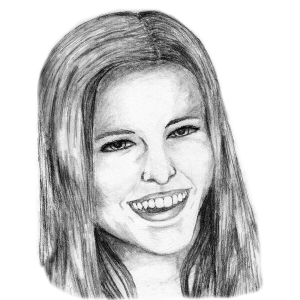 We may not actually be who we think we are. Or at least, we may be a little more complicated than we give ourselves credit for.
We may not actually be who we think we are. Or at least, we may be a little more complicated than we give ourselves credit for.
That’s what the genetic study of DNA has begun to explore. The study of genetics looks at our DNA, which is our supposedly unique combination of genes that makes us unquestionably unique. For years, scientists assumed that we each had one genome. That concept seems pretty logical to most people.
Except, biology can be dubious. As scientists become more familiar with human genetics, it seems that a single genome may not be all there is to make us who we are. Many scientists are beginning to recognize that within our bodies, there may actually be a variety of genomes. Welcome to the world of chimerism, also known as mosaicism, which encompasses the concept slightly more humanely.
When the Human Genome Project began in 1990, scientists were only concerned with taking one sample of DNA from consenting adults. Back then, DNA sampling was hugely expensive but was used to find an easier way of identifying personalized medicine. What originally was a government endeavor quickly became commercialized to private companies like 23andme that offered patients a quick genome mapping to track ancestors, explore preventative medicine and have a better understanding of who they are as humans.
This would be great progress if we had only one genome. But it’s looking like that’s not the case.
Once, a mother who gave birth to her sons was told that she and her sons weren’t a genetic match. This was hugely disturbing, obviously, but doctors discovered that she, like a few others in the world, had two forms of DNA in her body. Additionally, a British woman stumped doctors when she donated both Type A and Type O blood. (We typically have only one type.) Turns out, she had accidentally absorbed her twin’s blood while still in the womb. But these were written off as exceptions, not the rule.
This condition became known as chimerism, named after the combination of lion, snake and goat from Greek mythology. In recent biotech history, scientists have been able to fabricate different chimeras in rather controversial experiments: There have been pigs able to live with human blood, goat-sheep hybrids (geeps) and human cells fused with rabbit eggs. While the purposeful engineering of chimeras strikes a negative chord with animal rights activists, it is scientifically possible.
And if we’ve been able to engineer it, it’s fairly logical that it occurs naturally. In 2012, University of Washington scientists examined 59 female brains post-mortem. They expected to find only female genetic information, but were shocked to see that neurons in 63 percent of them had Y chromosomes, which distinguish males from females. A study by the International Journal of Cancer found that male genes can be found in female breast tissue as well. Some forms of leukemia have been linked to mutation in blood cells where bits of DNA are moved from one chromosome to another.
The widespread rates found in both healthy and unhealthy individuals imply that the majority of us probably have different genomes within. This shows that the human genome — really “a” human genome — is anything but a complete database of genetic identity. What used to be groundbreaking science has proven to be just the tip of the iceberg. If we really want to use genome projects for personalized medicine, we’re going to have to find a shrewd way to get around this unexpected surprise. Typically, the science that gets the most publicity — and therefore funding — is more headline-worthy than genomes. But if these developments show us anything, it is that biologists absolutely must do more exploring and they need the financial support to do it.
I don’t know much about my own genetic history; I’ve never needed to. But I like the idea of mosaicism. It makes humanity seem even more like art.
Katherine Foley is a senior in the School of Foreign Service. Curious By Nature appears every other Friday.













